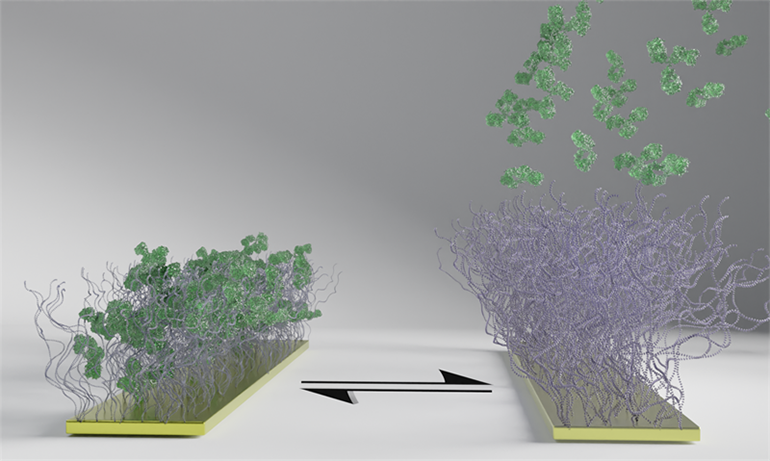Researchers at the Chalmers University of Technology in Sweden have developed a “polymer brush” system that can capture and release proteins on using electrical stimulation. Protein therapeutics are increasingly in demand, but creating them efficiently is still a challenge. Isolating therapeutic proteins from the liquid surrounding the cells used to produce them in biotechnological processes is difficult and inefficient, but the researchers behind this latest technology hope that the new technique will form an efficient and gentle way to achieve this. In addition, another exciting application may lie in controlled release devices that can deliver therapeutic proteins at a disease site in the body in response to an electrical signal. This could be initiated from outside the body, such as through a phone app.
Creating biomedicines, including protein therapies, can be very expensive. Part of the problem lies in isolating the proteins from the primordial soup they are created in. At present, chromatography is used to bind and separate such proteins, but this requires harsh chemicals to release the proteins again, damaging delicate proteins and resulting in poor yields . The researchers behind this latest innovation have created a reusable technology which can capture and release proteins hundreds of times.
“Our polymer surfaces offer a new way of separating proteins by using electrical signals to control how they are bound to and released from a surface, while not affecting the structure of the protein,” said Gustav Ferrand-Drake del Castillo, a researcher involved in the study.
The technology consists of polymer strands that are arranged in a brush structure. A small pulse of electricity allows the strands to begin capturing proteins or releasing proteins it has already captured. As the technology works in biological environments, it may have potential to work inside the body as a protein delivery device that can release therapeutic proteins at the touch of a button or a smartphone screen.
“You can imagine a doctor, or a computer program, measuring the need for a new dose of medicine in a patient, and a remote-controlled signal activating the release of the drug from the implant located in the very tissue or organ where it’s needed ,” said Ferrand-Drake del Castillo. “Being able to control the release and uptake of proteins in the body with minimal surgical interventions and without needle injections is, we believe, a unique and useful property. The development of electronic implants is only one of several conceivable applications that are many years into the future. Research that helps us to link electronics with biology at a molecular level is an important piece of the puzzle in such a direction.”
Study in Angewandte Chemie International Edition: Electrically Switchable Polymer Brushes for Protein Capture and Release in Biological Environments
